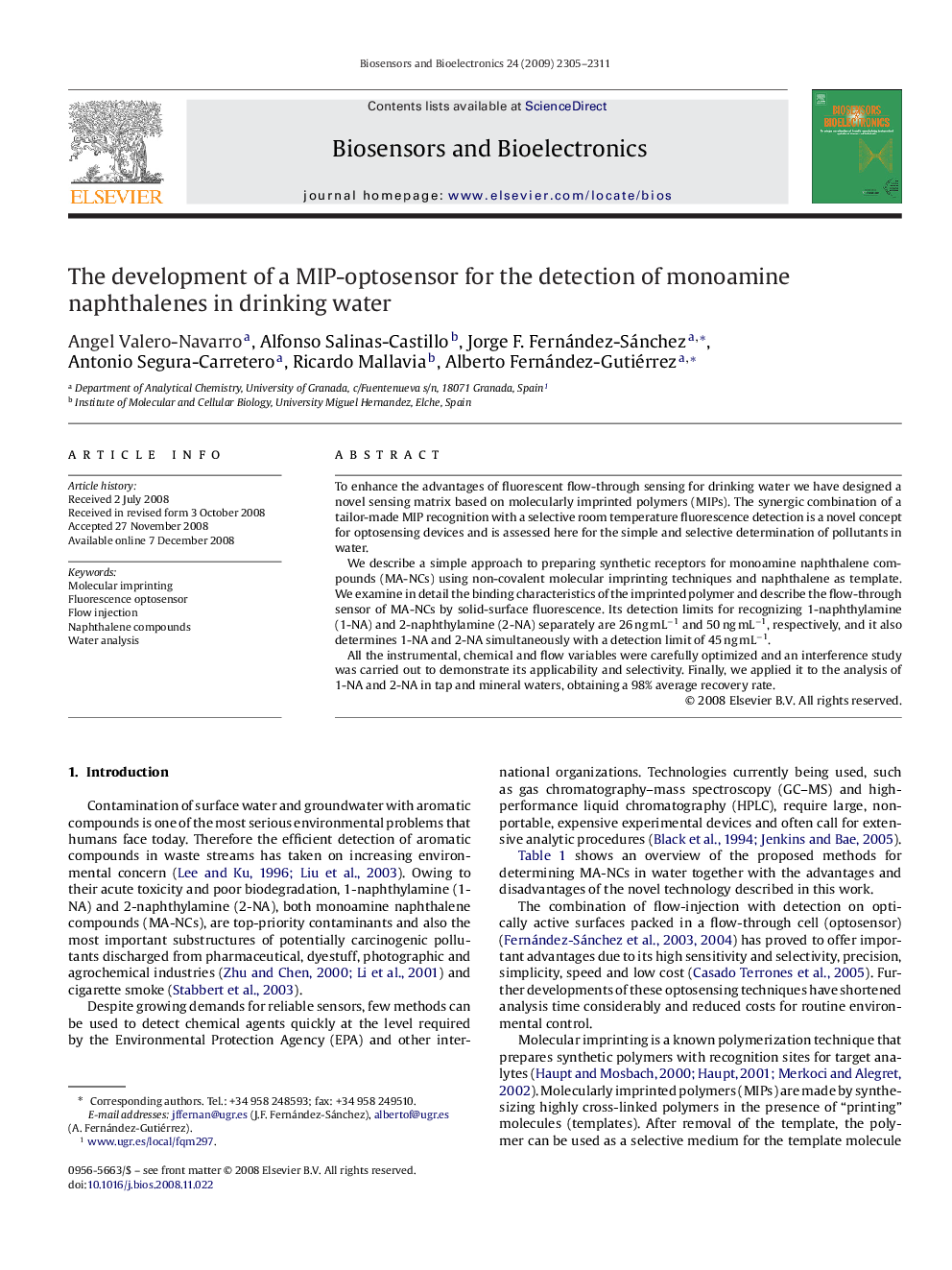| Article ID | Journal | Published Year | Pages | File Type |
|---|---|---|---|---|
| 869805 | Biosensors and Bioelectronics | 2009 | 7 Pages |
To enhance the advantages of fluorescent flow-through sensing for drinking water we have designed a novel sensing matrix based on molecularly imprinted polymers (MIPs). The synergic combination of a tailor-made MIP recognition with a selective room temperature fluorescence detection is a novel concept for optosensing devices and is assessed here for the simple and selective determination of pollutants in water.We describe a simple approach to preparing synthetic receptors for monoamine naphthalene compounds (MA-NCs) using non-covalent molecular imprinting techniques and naphthalene as template. We examine in detail the binding characteristics of the imprinted polymer and describe the flow-through sensor of MA-NCs by solid-surface fluorescence. Its detection limits for recognizing 1-naphthylamine (1-NA) and 2-naphthylamine (2-NA) separately are 26 ng mL−1 and 50 ng mL−1, respectively, and it also determines 1-NA and 2-NA simultaneously with a detection limit of 45 ng mL−1.All the instrumental, chemical and flow variables were carefully optimized and an interference study was carried out to demonstrate its applicability and selectivity. Finally, we applied it to the analysis of 1-NA and 2-NA in tap and mineral waters, obtaining a 98% average recovery rate.
